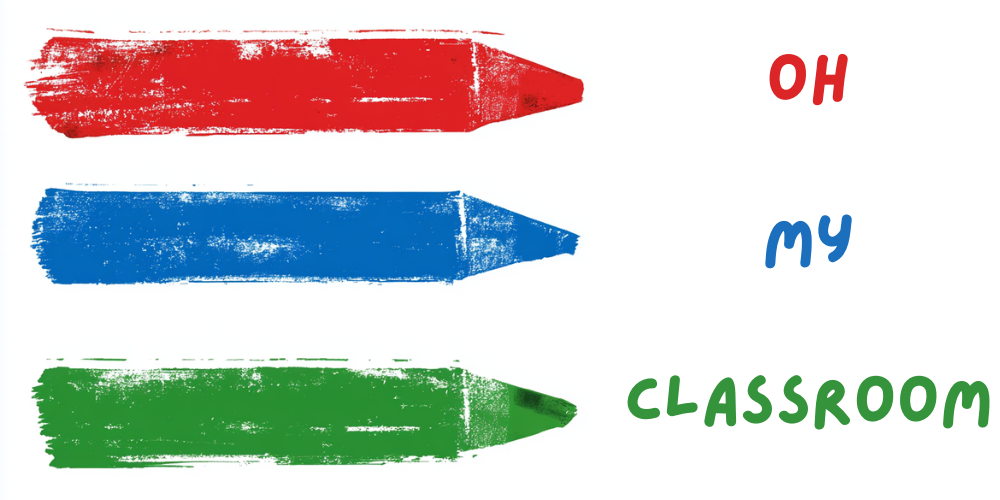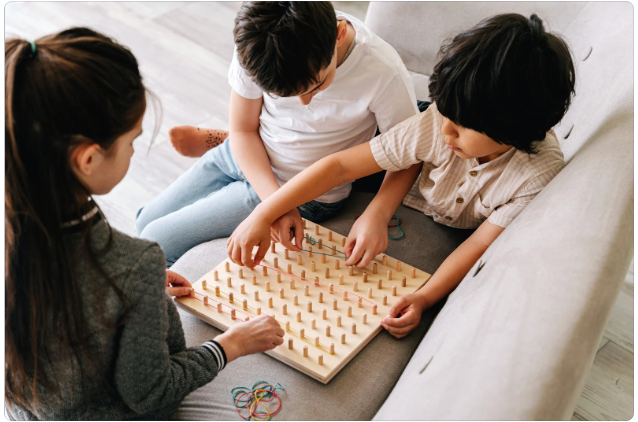Geoboards are fantastic tools that can engage and educate kids in a fun and interactive way.
These simple boards, typically made of wood or plastic, feature a grid of pegs that allow children to create geometric shapes and patterns by stretching rubber bands around them.
Geoboard activities provide numerous benefits, including enhancing spatial reasoning, promoting problem-solving skills, and fostering creativity.
Now, we will explore best geoboard activities for kids that will not only entertain them but also help them develop important mathematical and cognitive abilities.
Whether you’re a parent, teacher, or caregiver, these activities are sure to captivate young minds and make learning a joyous adventure.
Shape Exploration:

Begin by introducing various shapes to the kids, such as squares, rectangles, triangles, and circles. Encourage them to recreate these shapes on the geoboard using rubber bands. Start with simple shapes and gradually progress to more complex ones. This activity helps children understand the characteristics and properties of different shapes while improving their fine motor skills as they manipulate the rubber bands around the pegs. They can experiment with different combinations and arrangements to create their own unique shapes, fostering their creativity and spatial awareness.
Symmetry Creations:

Teach kids about symmetry by demonstrating how to create symmetrical designs on the geoboard. Discuss the concept of reflection and show them how to make a symmetrical shape by stretching rubber bands across the pegs. Encourage them to explore symmetry by creating their own symmetrical patterns, such as butterflies, hearts, or flowers. This activity promotes critical thinking as children analyze and visualize symmetry, honing their problem-solving abilities and boosting their understanding of geometric concepts.
Related: 20 Delightful Charades Ideas for Kids
Perimeter Puzzles:

Challenge kids to create different shapes with specific perimeters on the geoboard. Provide them with cards or instructions that state the desired perimeter, and they must use rubber bands to form shapes that match the given measurement. For example, if the card asks for a shape with a perimeter of 12 units, children can experiment with various combinations of sides and lengths to create shapes like rectangles, squares, or even irregular polygons. This activity strengthens their understanding of the perimeter and encourages them to think logically and strategically.
Related: 20 Terrific Rote Counting Activities for Kids
Fraction Exploration:
Introduce fractions to kids using the geoboard as a visual aid. Show them how to divide a shape into equal parts using rubber bands, creating fractions like halves, thirds, or quarters. Have them practice making different fractions on the geoboard by dividing shapes into equal parts or combining multiple shapes to form a specific fraction. This hands-on activity allows children to grasp the concept of fractions in a tangible and engaging way, promoting their mathematical thinking and fraction understanding.
Source: mathcoachscorner.com
Pattern Play:
Develop children’s patterning skills by encouraging them to create and extend patterns on the geoboard. Start with simple patterns like ABAB or AABB, where they alternate colors or shapes, and then progress to more complex patterns involving multiple attributes. Kids can use rubber bands of different colors to represent the elements of the pattern and extend it across the geoboard. This activity enhances their pattern recognition, sequencing abilities, and logical thinking, while also fostering their creativity as they design their own unique patterns.
Source: kidsactivitiesblog.com
Geometric Art:
Inspire kids to unleash their artistic side by using the geoboard as a canvas for geometric art. Encourage them to create unique and intricate designs by stretching rubber bands across the pegs in different patterns and shapes. They can experiment with colors, textures, and overlapping bands to produce visually appealing artwork. This activity not only enhances their fine motor skills but also nurtures their creativity and appreciation for geometric aesthetics.
Source: parentingchaos.com
Tangram Challenges:
Introduce tangrams to kids by using the geoboard as a tangram puzzle. Provide them with tangram cards or printouts depicting various shapes and challenge them to recreate those shapes using the rubber bands on the geoboard. As they arrange the rubber bands to form the given shapes, they will develop spatial reasoning, problem-solving abilities, and an understanding of geometric transformations.
Source: treasurehunt4kids.com
Area Exploration:
Help kids grasp the concept of the area through geoboard activities. Demonstrate how to calculate the area of a shape by counting the number of squares enclosed within it. Encourage them to experiment with different shapes and sizes on the geoboard and determine their respective areas. They can compare the areas of different shapes, explore the relationship between perimeter and area, and even engage in problem-solving tasks that involve maximizing or minimizing area. This activity fosters mathematical reasoning, measurement skills, and critical thinking.
Source: numberdyslexia.com
Coordinate Grid Fun:
Introduce the concept of coordinates to kids using the geoboard. Teach them how to locate points on the grid by using the intersections of the pegs as coordinates. Provide them with coordinate pairs and challenge them to stretch rubber bands to connect those points on the geoboard. They can create various shapes, and lines, or even plot simple graphs. This activity develops their understanding of the coordinate system, strengthens their graphing skills, and lays the foundation for future learning in geometry and algebra.
Source: mathgeekmama.com
Geoboard Puzzles:
Create puzzle challenges for kids to solve using the geoboard. Design puzzles that require them to recreate specific shapes or patterns on the geoboard using a limited number of rubber bands. You can provide clues or restrictions to make the puzzles more engaging and thought-provoking. This activity stimulates critical thinking, problem-solving skills, and perseverance as children analyze the given information, plan their approach, and experiment with different configurations to solve the puzzles.
Source: eleganter.com.au
Geoboard Fractions:
Extend the fraction exploration activity by introducing more complex fractions on the geoboard. Challenge kids to represent fractions like one-fourth, three-fifths, or two-thirds using rubber bands. They can experiment with dividing shapes into equal parts of different sizes and configurations to create the desired fractions. This activity reinforces their understanding of fractions, equivalent fractions, and fraction operations, while also reinforcing their spatial awareness and fine motor skills.
Source: mathcoachscorner.com
Geoboard Mazes:
Create maze challenges on the geoboard for kids to navigate using rubber bands. Design a maze by placing obstacles or barriers on the pegs, and children must find a path through the maze by stretching rubber bands to avoid the obstacles and reach the goal. This activity promotes problem-solving, spatial reasoning, and logical thinking as kids strategize and navigate their way through the maze using the geoboard as a tactile and interactive puzzle.
Source: pinterest.com
Geoboard Symmetry Patterns:
Encourage kids to explore symmetry further by creating symmetrical patterns on the geoboard. Provide them with different pattern templates, such as chevron patterns, star patterns, or zigzag patterns, and challenge them to replicate those patterns using rubber bands while maintaining symmetry. This activity enhances their understanding of symmetry, pattern recognition, and artistic expression as they design and manipulate symmetrical patterns on the geoboard.
Source: frugalfun4boys.com
Geoboard Area Comparison:
Deepen kids’ understanding of area by comparing the areas of different shapes on the geoboard. Provide them with pairs of shapes and ask them to determine which shape has a greater or smaller area. They can experiment with rearranging the rubber bands to visualize how the area changes when the shape is altered. This activity reinforces their measurement skills, critical thinking, and ability to analyze and compare different shapes based on their areas.
Source: twinkl.com.au
Geoboard Coordinate Challenges:
Take coordinate grid activities to the next level by introducing more complex challenges. Provide kids with sets of coordinates and ask them to create specific shapes or designs on the geoboard. You can also present them with coordinate transformations, such as reflecting a shape across an axis or translating it to a new location. This activity strengthens their understanding of coordinates, geometric transformations, and spatial visualization, while also fostering their creativity and problem-solving skills.
Source: ideagalaxyteacher.com
Geoboard Symmetrical Letters:
Engage kids in a language and geometry crossover activity by challenging them to create symmetrical letters of the alphabet on the geoboard. Provide them with letter templates or cards showing a specific letter, and they must use rubber bands to replicate the letter while maintaining symmetry. This activity combines fine motor skills, spatial awareness, and letter recognition, fostering their understanding of symmetry in both geometric and linguistic contexts.
Source: alittlepinchofperfect.com
Geoboard Puzzle Solving:
Design puzzle challenges on the geoboard that requires kids to think critically and solve problems. Create puzzles where they need to arrange rubber bands on the board to form specific shapes, patterns, or even words. Provide them with clues or partial configurations to guide their problem-solving process. This activity promotes logical reasoning, spatial thinking, and perseverance as kids work through the puzzles to find the solutions.
Source: eleganter.com.au
Geoboard Tangram Art:
Combine tangrams and geoboards to inspire kids to create artistic tangram designs. Provide them with tangram puzzle cards or templates and challenge them to recreate those shapes using rubber bands on the geoboard. They can experiment with different arrangements, colors, and orientations to design their own unique tangram compositions. This activity nurtures their creativity, spatial skills, and appreciation for the art of tangrams.
Source: craftionary.net
Geoboard Measurement Challenges:
Introduce measurement concepts using the geoboard as a tool for comparing lengths, widths, or areas. Challenge kids to create shapes with specific measurements, such as finding a shape with an area of 12 square units or a perimeter of 16 units. They can use rubber bands to manipulate and adjust the dimensions of the shapes until they meet the given criteria. This activity enhances their understanding of measurement, precision, and mathematical problem-solving.
Source: thoughtco.com
Geoboard Free Exploration:
Provide kids with open-ended time to freely explore and create on the geoboard. Let them experiment with rubber bands, shapes, patterns, and designs without any specific instructions or constraints. Encourage them to follow their curiosity, express their ideas, and invent their own games or challenges using the geoboard. This open exploration activity fosters creativity, independent thinking, and a sense of ownership over their learning experience.
Source: handsonaswegrow.com

